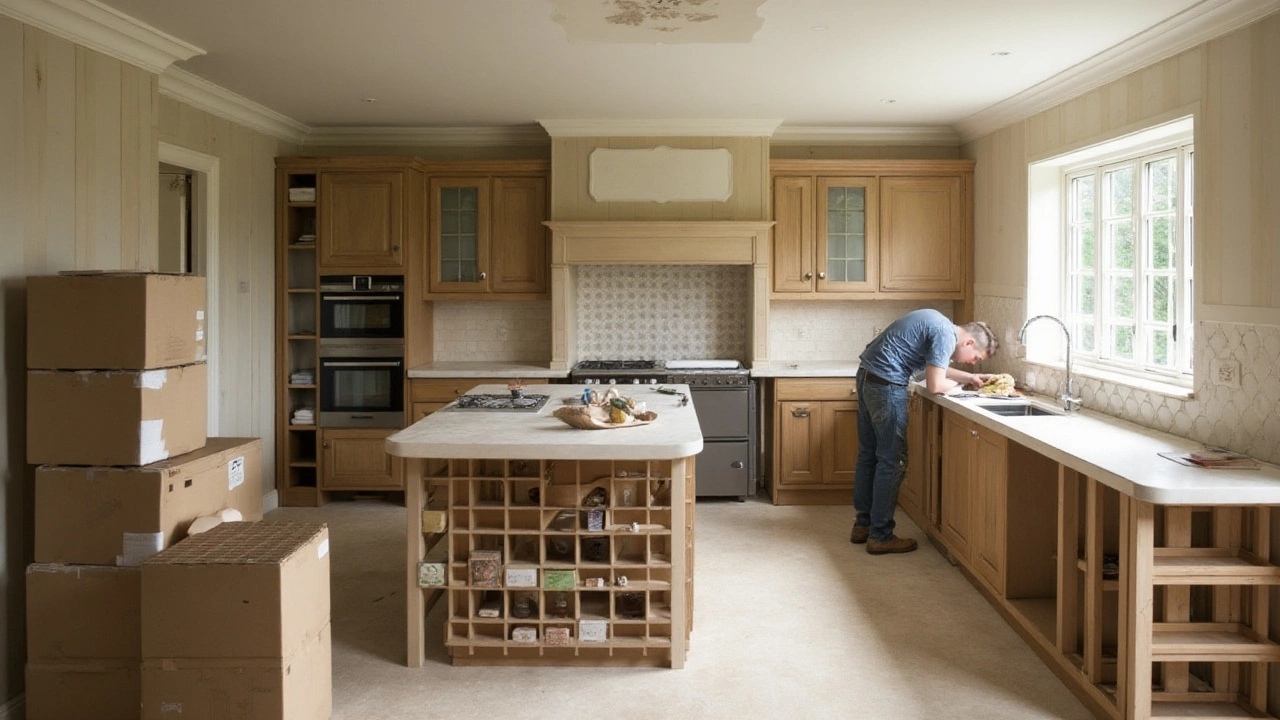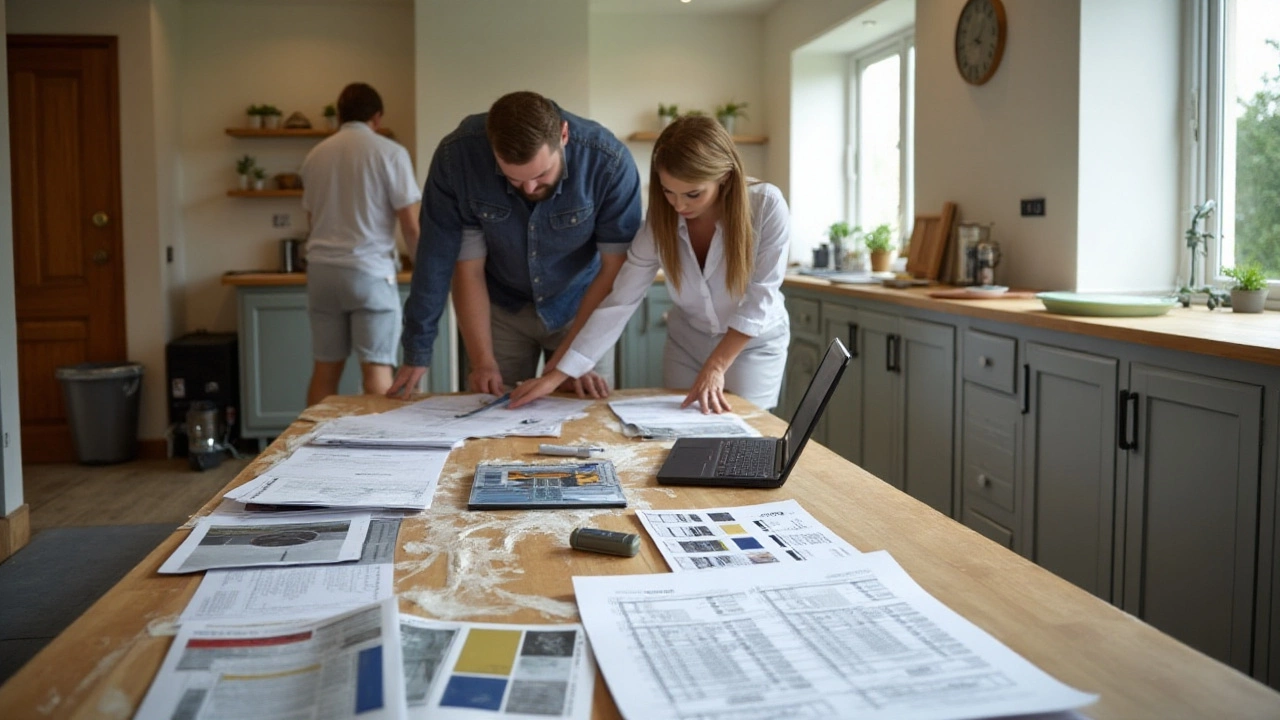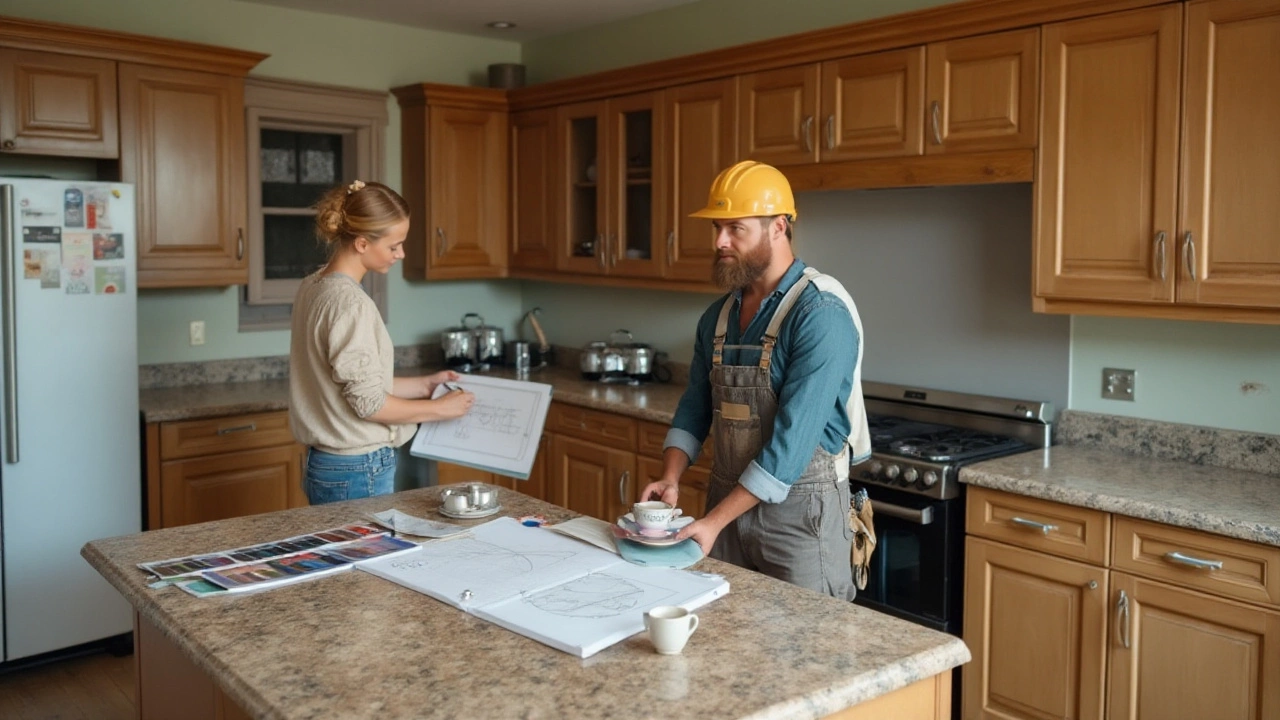Renovating a kitchen, especially one with dimensions around 12x12 feet, can be an exciting venture but it's no small feat in terms of planning or investment. The cost can vary widely depending on the choices you make regarding materials, design, and labor. Whether you're dreaming of a high-end gourmet kitchen or a more functional and budget-friendly space, understanding the cost implications of each aspect will help you navigate the renovation process more smoothly.
Each component, from cabinetry and countertops to lighting and flooring, contributes to the overall expense. In this guide, we'll breakdown the key factors that influence costs, and offer practical advice on budgeting and cutting costs where possible. Whether you're hiring professionals or doing some of the work yourself, these insights will prepare you for a successful kitchen remodel.
- Factors Influencing Cost
- Budgeting for Materials
- Labor and Installation Costs
- Saving Tips and Tricks
Factors Influencing Cost
When planning to remodel a 12x12 kitchen, several key factors will determine the overall price. One of the primary considerations is the quality and type of materials you choose. For example, opting for solid wood cabinets versus laminate ones can significantly impact your budget. Each material choice, whether for countertops, flooring, or backsplash, brings its own price tag and durability level. Consider that while high-end materials like granite or marble for countertops are desirable, quartz offers a slightly more budget-friendly and durable alternative without sacrificing aesthetics.
Another aspect influencing the cost is the extent of changes to the existing layout. If your redesign involves altering the kitchen's layout, including moving plumbing or electrical outlets, this will undoubtedly increase costs. The labor involved in such tasks requires skilled tradespeople, and that expertise translates into higher prices. Additionally, the cost might climb if you're planning to integrate advanced smart technology for a modern kitchen experience. Such integrations improve functionality but come with installation and purchase costs that need to be accounted for. According to Remodeling Magazine's Cost vs. Value report, minor kitchen remodels can recoup about 83% of their cost, making these upgrades not only luxurious but potentially profitable.
Labor costs form a significant portion of your renovation budget. Hiring reputable contractors usually costs more but ensures quality and durability in results. It's crucial to conduct proper due diligence when selecting tradespeople, as their craftsmanship can significantly impact the longevity and appeal of your new kitchen. Seeking testimonials, viewing past projects, or consulting with a local trade association can provide valuable insights.
"The bitterness of poor quality remains long after the sweetness of low price is forgotten," as emphasized by Benjamin Franklin, serving as a cautionary guideline for focusing too heavily on minimizing labor costs at the expense of quality.
The scope of automation and choice of appliances also heavily influence total expenditure. Balancing energy-efficient models with budgetary constraints can be challenging but ultimately it pays off in reduced energy bills over time. Comparing energy ratings and looking out for deals or package offers can help mitigate some expenses. Keep in mind that while high-end brands may carry a premium, mid-range options often present an excellent compromise in performance and price. Finally, always have an emergency fund set aside for those unforeseen circumstances that inevitably arise in renovation projects, as having financial flexibility ensures the process remains as stress-free as possible.

Labor and Installation Costs
When it comes to estimating the costs of remodeling a 12x12 kitchen, labor and installation fees are some of the most influential elements. These expenses usually make up about 20% to 35% of the total budget. The variation in price often hinges on the type of professionals you choose to hire and their geographical location. In bustling cities, hiring skilled contractors tends to be more expensive due to the high demand and cost of living. Meanwhile, in suburban or rural areas, you might find more competitive rates. Homeowners should assess whether they wish to employ a general contractor or specialist tradespeople, each having unique cost structures and expertise in specific areas.
Hiring a general contractor is beneficial if you want a single point of contact who manages the entire project from start to finish. They handle everything from hiring sub-contractors, purchasing materials, to overseeing day-to-day operations. However, this convenience comes at a price as general contractors often charge a premium for their management and oversight. This can range anywhere from 10% to 20% on top of raw labor costs. Alternatively, directly employing specific tradespeople like electricians, plumbers, and carpenters might save on costs but requires more hands-on involvement to ensure proper coordination and timing.
The cost of installation also covers the intricate work of fitting cabinets, installing appliances, setting tiles, painting, and laying down flooring. Each of these tasks demands precision and skill. For instance, the cabinet installation in itself can cost between $100 and $300 per linear foot. If you're aiming for bespoke, high-end cabinetry, this price can creep higher. Similarly, installing an oven or refrigerator isn't just about plugging them in; there must be precise measuring, adjustments made for clearance, and sometimes, architectural modifications to accommodate these appliances. These aspects underscore why professional installation, though expensive, facilitates a functional and aesthetic kitchen.
Kitchen remodeling projects often have hidden costs that surprise many homeowners. Be prepared for potential structural complications that might become apparent once work begins. As surprising as it may sound, past renovations might not have followed the current building codes, prompting new electrical or plumbing work to ensure safety. This is why a well-prepared budget should include a contingency buffer, often around 10% to 15% of the estimated project cost, to handle such unforeseen exigencies gracefully. Having such buffers ensures that your project stays on track without financial stress or compromise on quality.
The investment in qualified labor promises long-lasting results, enhancing both the safety and the beauty of your revamped kitchen. As noted by renowned contractor Mike Holmes, "Quality means doing it right when no one is looking."
Taking such advice to heart can transform your kitchen from mere functionality to an impressive culinary haven.By understanding and planning for labor and installation costs, you can navigate the renovations smoothly, ensuring you achieve the stunning and practical kitchen space you've always dreamed of owning.

Saving Tips and Tricks
Revamping a kitchen doesn't necessarily mean you have to break the bank. There are smart strategies you can employ to keep costs in check and still achieve the kitchen of your dreams. A great place to start is by focusing on the existing layout of your 12x12 kitchen. Retaining the current layout will save significant expenses because it avoids costly changes to plumbing and electrical systems. Shifting major appliances or the sink typically involves more than just physical moves; it often requires rerouting utility lines, which can elevate costs rapidly.
Cabinetry is a major expense in any kitchen remodel, so consider refinishing or painting existing cabinets instead of replacing them. You can achieve a fresh and modern look with a new color and updated hardware. On the same note, consider open shelving in place of some upper cabinets. It's an affordable way to reduce costs while adding a modern, airy feel to the kitchen.
When it comes to choosing materials, being flexible can really pay off. Engineered wood or vinyl flooring that mimics real wood can be budget-friendly alternatives. Similarly, laminate or butcher block countertops can offer impressive aesthetics without the cost of granite or quartz. Lighting plays a big role in kitchen design as well. Installing dimmable LED fixtures can enhance the ambiance of your kitchen remodeling project while helping you save on energy bills over time.
Consider sourcing appliances that offer excellent performance at lower costs. Scratch-and-dent outlets or appliance warehouses often stock reputable brands at discounted prices. These products are typically in perfect working order, with slight cosmetic imperfections that you might not even notice or can easily conceal. A 2021 HomeAdvisor survey highlighted that opting for mid-range appliances could cut your budget by up to 20% versus high-end models.
“Efficient budgeting is often less about sacrifice and more about smart substitution and prioritization,” explains Sarah Wilson, a kitchen renovation expert at Design Savvy.
Do-it-yourself projects can further enhance savings when it comes to tasks like painting, applying a backsplash, or installing simple light fixtures. The labor costs saved here can be reallocated to other areas of your renovation. However, recognize your limitations and hire professionals for critical systems to avoid costly mistakes. Remember, small details like drawer handles, fancier outlets, or an eye-catching fixture can upgrade your space dramatically without significantly increasing your budget.
Avoid spur-of-the-moment decisions which commonly arise in renovations. Establish a realistic budget and plan to stick to it. Keeping a small contingency fund for unexpected expenses always helps. Online budgeting tools or apps can prove useful here, enabling you to track spending and adjust plans if necessary. Think of every dollar saved on unnecessary splurges as an opportunity to elevate other parts of your project.
